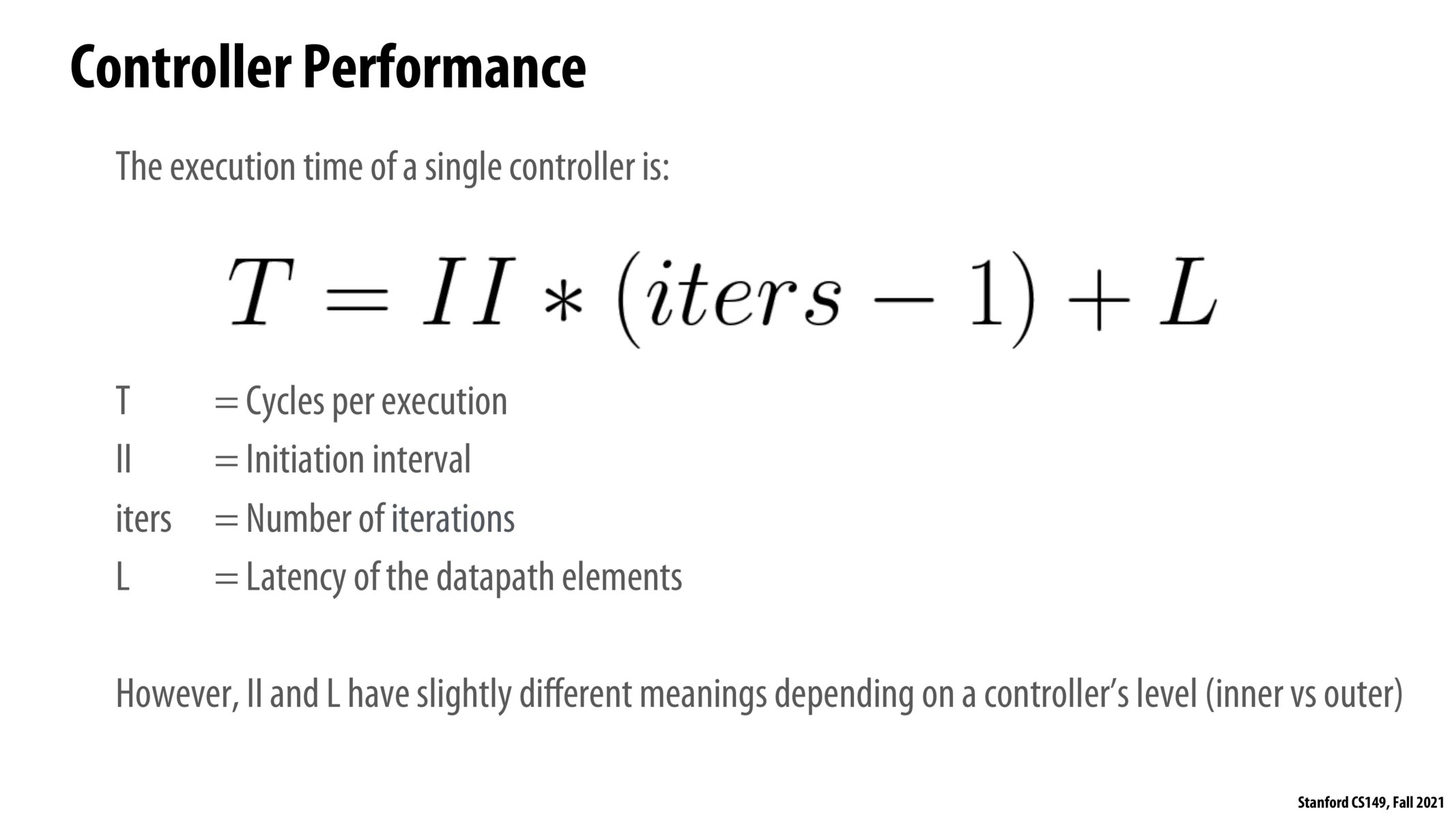


Could someone explain what the initiation interval means? Why is it different from L, and what are the differences between inner and outer control? Is it simply representing the amount of time required to start the next iteration of the controller?

Yes, II is the time required to start the next iteration.
for (int i = 0; i < N; i++) // loop logic takes II time per-iteration { body // body takes L time }
For the inner controllers, the body of the loop is primitive circuit operations, so L is simply the cost of the loop body. For outer controllers, as described in a later slide, it depends on the scheduling mechanism. Using a pipelined foreach, II would be the max of the pipeline stages, and i believe L would be the cost of all the pipeline stages since that cost is incurred once and the pipeline hides it for the rest of the iterations.

I wonder if this metric T can be used to compute performance values similar to those such as arithmetic intensity and operational intensity.

I am not sure why it would be number of iterations minus 1 instead of number of iterations in the execution time formulation.

@rubensl Perhaps it's because the latency time covers the first iteration? I am also unsure but that's my guess

@rubensl I think of it as the single iteration (I see it as the last, some people see it as the first) that doesn't fully exploit the pipelining parallelism so it's taken into account by L
Please log in to leave a comment.
The reason why L is only counted once toward the execution time is that the loop iterations are pipelined in the hardware circuits. Thus, the effective cost per loop iteration is just II, instead of II+L.